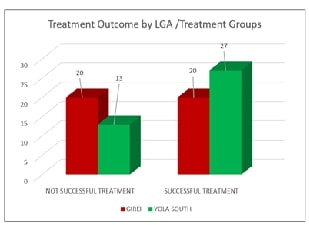Effect of Audio Recordings of CMAM Key Messages on Treatment Outcome

Abstract:
Severe acute
malnutrition (SAM) poses a significant threat to child health in Nigeria. The
CMAM program provides essential treatment for children with SAM, and treatment quality
is influenced by how well caregivers understand key CMAM messages. This study
evaluates the effect of audio messages on treatment outcomes in SAM cases
compared to traditional health talks. An interventional study design was used,
involving 80 SAM children in Adamawa State. Participants were divided into two
groups: the experimental group received weekly audio messages in Hausa, while
the control group received traditional health talks from health workers.
Treatment outcomes were measured based on weight gain and mid-upper arm
circumference. Data were collected via the mHealth platform and analysed on
SPSS 16 using t-tests to determine statistical significance. The mean age of the respondents was 28 years with an
age range of 16.0 – 50.0 years, while the mean age of the index children was 15
months with a range of 6.0 – 48.0 months. The number of successful treatments
was higher in the Experimental group than in the Control group. The t-test for
equality of means for treatment outcomes across the two groups was, however not
significant (P> 0.005) at a 95% Confidence Interval. Conclusively, we accept
the null hypothesis. Audio recordings of CMAM key messages were equally
effective as traditional health talks in influencing treatment outcomes in CMAM
interventions. The use of audio messages has the potential to ease the burden of
health workers while ensuring consistency in message delivery without reducing
the efficacy of treatment.
References:
[1].
2022
Global Nutrition Report https://globalnutritionreport.org/resources/nutrition-profiles/africa/western-africa/nigeria/
[2].
Federal
Ministry of Health and Social Welfare of Nigeria (FMoHSW), National Population
Commission (NPC) [Nigeria], and ICF. 2024. Nigeria Demographic and Health
Survey 2023–24: Key Indicators Report. Abuja, Nigeria, and Rockville, Maryland,
USA: NPC and ICF.
[3].
Grover Z., Ee L. C.,
2009 Protein energy malnutrition. Pediatr Clin N Am. 2009;56(5):
1055–68
[4].
WHO.2013
Guideline: updates on the management of severe acute malnutrition in infants
and children. Geneva, World Health Organization; 2013.
[5].
Global
Nutrition Report GNR 2018 https://globalnutritionreport.org/reports/global-nutrition-report-2018/
[6].
Black
R. E., Allen L. H., Bhutta Z. A.,
Caulfield L. E., Onis M. D., Ezzati M. Mathers
C., and Rivera J 2008 Maternal and child under nutrition: global and regional
exposures and health consequences. Lancet 371, 243–260
[7].
National
Population Commission (NPC) [Nigeria] and ICF. 2019. Nigeria Demographic and
Health Survey 2018. Abuja, Nigeria, and Rockville, Maryland, USA: NPC and ICF
[8].
Olofin,
Ibironke, et al. 2013. “Associations of Suboptimal Growth with All-Cause and
Cause-Specific Mortality in Children under Five Years: A Pooled Analysis of Ten
Prospective Studies.” PLOS One. 8(5): e64636.
[9].
Collins,
S., 2004. “Community-Based Therapeutic Care: A New
Paradigm for Selective Feeding in Nutritional Crisis.”
[10]. Collins, Steve and
Sadler, Kate. 2002. “Outpatient Care for Severely Malnourished Children in
Emergency Relief Programmes: A Retrospective Cohort Study.” The Lancet.
Volume 360, Issue 9348, pp. 1824-1830.
[11]. WHO, World Food
Programme, U. N., System Standing
Committee on Nutrition, and UNICEF. 2007. Community-Based Management of Severe
Acute Malnutrition: A Joint Statement by the WHO, World Food Programme, U. N.
System Standing Committee on Nutrition and UNICEF. http://apps.who.int/iris/bitstream/10665/44295/1/9789280641479_eng.pdf?ua=1&ua=1
.
[12]. UNICEF 2013.
Global Evaluation of Community Management of Acute Malnutrition (CMAM): Global
Synthesis Report. New York: UNICEF. Available at: http://www.unicef.org/evaldatabase/index_69843.html
[13]. Adeyemi, O., et al., 2015 How to strengthen a Community-Based
Management of Acute Malnutrition programme in northern Nigeria, ORIE Research
Summary, Issue 09, Brighton: ORIE
[14]. Adeyemi, O., et al., 2015 How to strengthen a Community-Based
Management of Acute Malnutrition programme in northern Nigeria, ORIE Research
Summary, Issue 09, Brighton: ORIE
[15]. Federal Ministry
of Health. 2010. National guidelines for the treatment of severe acute
malnutrition in Nigeria. Abuja, Nigeria: Federal Ministry of Health.
[16]. World Health
Organisation 2013 Guideline: Updates on the Management of Severe Acute
Malnutrition in Infants and Children. Geneva: World Health Organization;
available at http://www.ncbi.nlm.nih.gov/books/NBK190328
[17]. Ciliberto M. A., Sandige H., Ndekha M. J. et al. 2005 Comparisonofhome-basedtherapy
withready-to-use thera peutic food with standard therapy in the treatment of
malnourished Malawian children: a controlled, clinical effectiveness trial.
Am J Clin Nutr 81, 864–870.
[18]. Free, C.,
Phillips, G., Watson, L., Galli, L., Felix, L., Edwards, P., Haines, A., 2013. The effectiveness of mobile-health technologies
to improve health care service delivery processes: A systematic review and
meta-analysis. PLoS Medicine, 10(1), e1001363. doi:
10.1371/journal.pmed.1001363
[19]. Kaplan, W. A., 2006. Can the ubiquitous power of mobile phones be
used to improve health outcomes in developing countries. Global Health, 2(9),
1-14.
[20]. Krishna, S., Boren, S. A., & Balas, E. A. 2009. Healthcare via
cell phones: A systematic review. Telemedicine and e-Health, 15(3),
231-240.
[21]. Amsalu, B., et al.
2016. "Mobile-based health communication to improve treatment adherence
and health outcomes in resource-limited settings: A systematic review."
PLOS Medicine.

